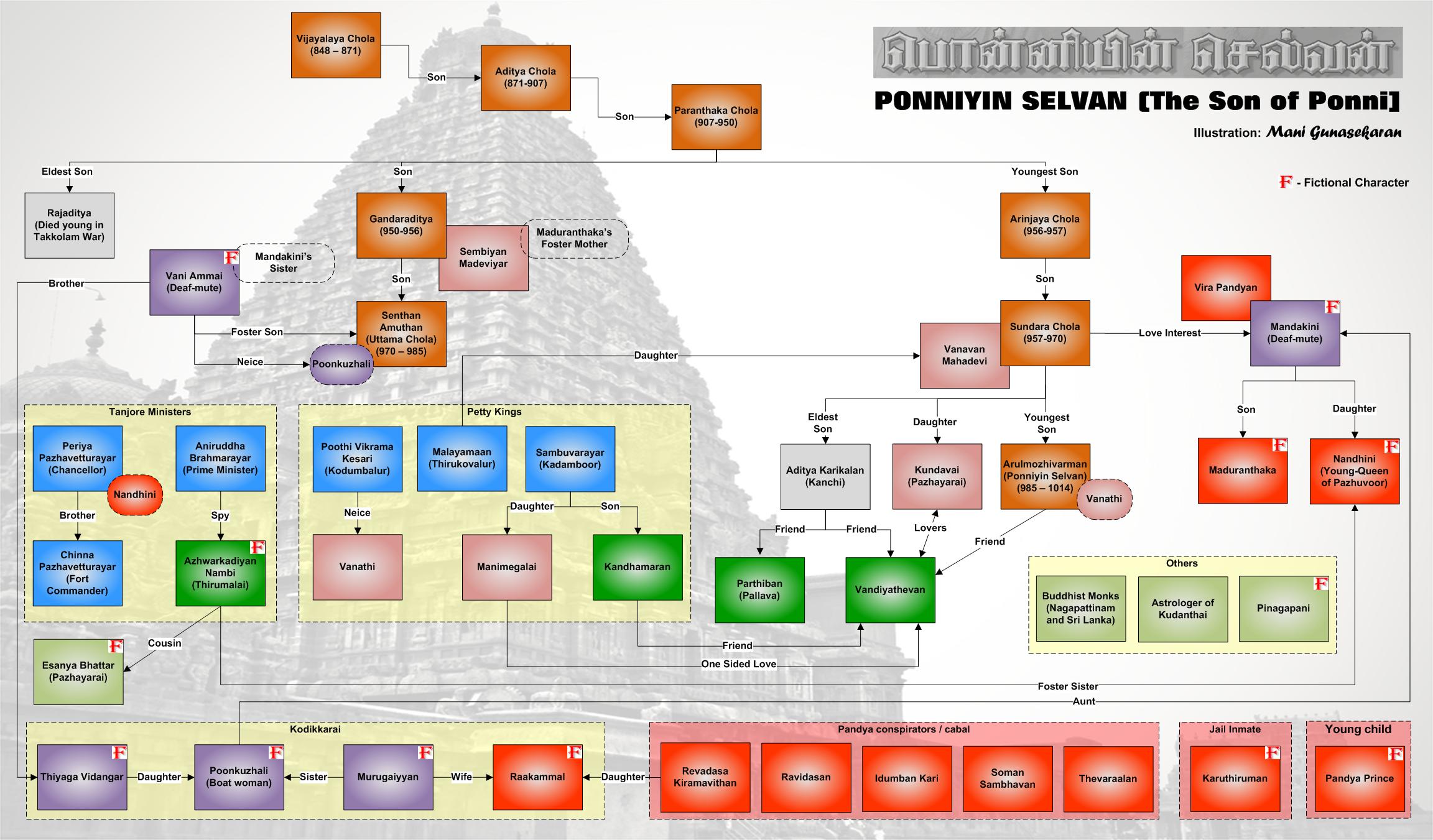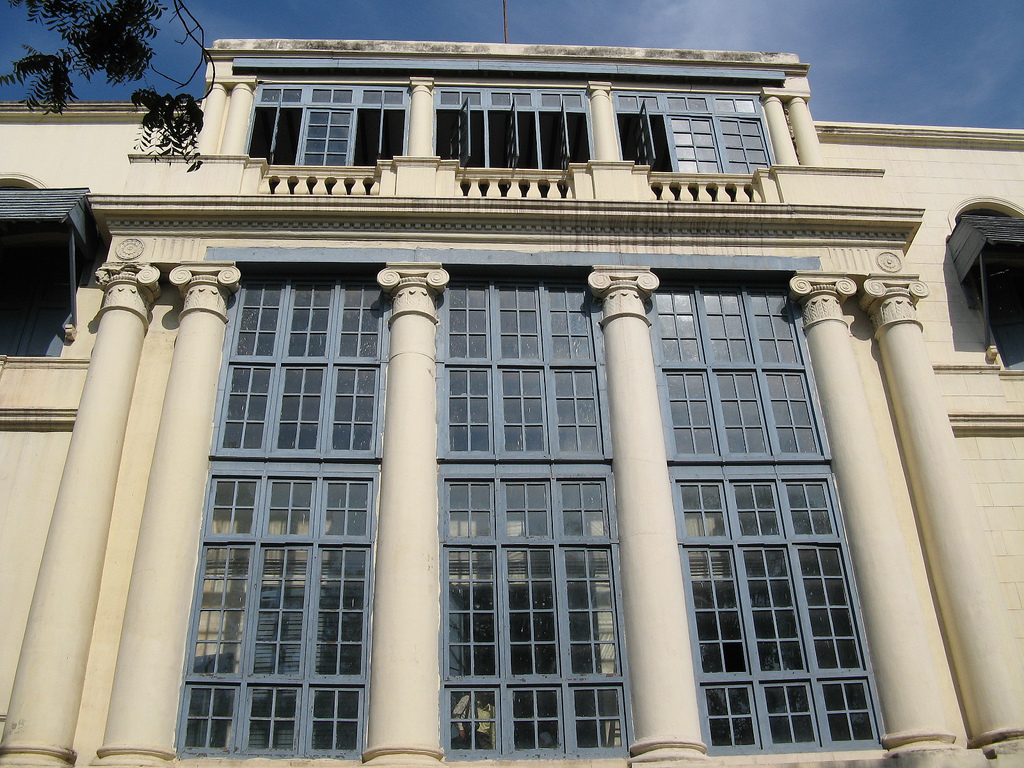|
Maniam
T.U. Subramaniam (1924-1968), also known as Maniam, was an illustrator for Tamil magazines, known for his reconstructions of the past in illustrations for popular historical fiction. Biography Maniam learned to draw at a young age by watching his uncle Lingayyah sketch. He studied at a school in Mylapore, Chennai, and later at School of Arts, Chennai under Devi Prasad Roy Choudhury. While still a student, he was introduced to Kalki Krishnamurthy, the celebrated novelist and editor of Kalki magazine. Impressed by his work, Kalki urged the young artist to leave his studies and work with him. Maniam thus came to work with Kalki. For his guru and guide, he illustrated the serialized novels Sivagamiyin Sapatham set in the Pallava kingdom, and the classic Ponniyin Selvan depicting the Chola age. Maniam's illustrations for the latter classic employed a variety of techniques and mediums, from pen & ink to gouache and watercolour. Maniam's visualization of the Tamil classical past was mu ... [...More Info...] [...Related Items...] OR: [Wikipedia] [Google] [Baidu] |
Ponniyin Selvan
''Ponniyin Selvan'' () is a historical fiction novel by Indian author Kalki Krishnamurthy, written in Tamil. It was first serialized in the weekly editions of ''Kalki'', a Tamil magazine, from 29 October 1950 to 16 May 1954 and later integrated into five volumes in 1955. In about 2,210 pages, it tells the story of early days of Chola prince Arulmozhivarman. Kalki visited Sri Lanka three times to gather information and for inspiration. ''Ponniyin Selvan'' is regarded as one of the greatest novels of Tamil literature. The fan-following for the series, which was published weekly in ''Kalki'', was such that it elevated the magazine circulation to reach a figure of 71,366 copies –a vast readership in a newly independent India. The book continued to be admired in the modern era, developing a cult following and fanbase among people of all generations. ''Ponniyin Selvan'' has garnered critical acclaim for its tightly woven plot, vivid narration, wit of the dialogue, and por ... [...More Info...] [...Related Items...] OR: [Wikipedia] [Google] [Baidu] |
Chola
The Chola dynasty was a Tamil thalassocratic empire of southern India and one of the longest-ruling dynasties in the history of the world. The earliest datable references to the Chola are from inscriptions dated to the 3rd century BCE during the reign of Ashoka of the Maurya Empire. As one of the Three Crowned Kings of Tamilakam, along with the Chera and Pandya, the dynasty continued to govern over varying territories until the 13th century CE. The Chola Empire was at its peak under the Medieval Cholas in the mid-9th century CE. The heartland of the Cholas was the fertile valley of the Kaveri River. They ruled a significantly larger area at the height of their power from the later half of the 9th century till the beginning of the 13th century. They unified peninsular India south of the Tungabhadra River, and held the territory as one state for three centuries between 907 and 1215 CE. K. A. Nilakanta Sastri, ''A History of South India'', p 157 Under Rajaraja I ... [...More Info...] [...Related Items...] OR: [Wikipedia] [Google] [Baidu] |
Tamil Artists
Tamil may refer to: * Tamils, an ethnic group native to India and some other parts of Asia ** Sri Lankan Tamils, Tamil people native to Sri Lanka also called ilankai tamils **Tamil Malaysians, Tamil people native to Malaysia * Tamil language, natively spoken by the Tamils * Tamil script, primarily used to write the Tamil language **Tamil (Unicode block), a block of Tamil characters in Unicode * Tamil dialects, referencing geographical variations in speech See also * Tamil cinema, also known as Kollywood, the word being a portmanteau of Kodambakkam and Hollywood. * Tamil cuisine * Tamil culture, is considered to be one of the world's oldest civilizations. * Tamil diaspora * Tamil Eelam, a proposed independent state in the north and east of Sri Lanka * Tamil Nadu, one of the 28 states of India * Tamil nationalism * ''Tamil News'', a daily Tamil-language television news program in Tamil Nadu * Tamilakam, the geographical region inhabited by the ancient Tamil people, covered today's Ta ... [...More Info...] [...Related Items...] OR: [Wikipedia] [Google] [Baidu] |
Indian Illustrators
Indian or Indians may refer to: Peoples South Asia * Indian people, people of Indian nationality, or people who have an Indian ancestor ** Non-resident Indian, a citizen of India who has temporarily emigrated to another country * South Asian ethnic groups, referring to people of the Indian subcontinent, as well as the greater South Asia region prior to the 1947 partition of India * Anglo-Indians, people with mixed Indian and British ancestry, or people of British descent born or living in the Indian subcontinent * East Indians, a Christian community in India Europe * British Indians, British people of Indian origin The Americas * Indo-Canadians, Canadian people of Indian origin * Indian Americans, American people of Indian origin * Indigenous peoples of the Americas, the pre-Columbian inhabitants of the Americas and their descendants ** Plains Indians, the common name for the Native Americans who lived on the Great Plains of North America ** Native Americans in the U ... [...More Info...] [...Related Items...] OR: [Wikipedia] [Google] [Baidu] |
Parthiban Kanavu
'' Parthiban Kanavu '' ( ta, பார்த்திபன் கனவு, , lit. Parthiban's dream) is a Tamil novel written by Kalki Krishnamurthy. Details Adapted in 1960 into a film of the same name, starring Gemini Ganesan and Vyjayanthimala the story is a sequel to Sivagamiyin Sapatham and a curtain-raiser to Ponniyin Selvan. In 2004, Nirupama Raghavan penned an abridged (English) translation. Plot summary This novel chronicles the attempts of Vikraman, the son of the Chola king Parthiban, to attain independence from the Pallava ruler Narasimhavarman I. In the seventh century the Cholas are vassals of the Pallavas. Parthiban conveys his dream of the Chola dynasty regaining its glory – which he believes is lost since they are no longer the independent rulers – to his young son Vikraman. Parthiban refuses to pay tribute to the Pallavas, triggering a battle in which Parthiban is killed. Before he dies, on the battlefield, an enigmatic monk promises P ... [...More Info...] [...Related Items...] OR: [Wikipedia] [Google] [Baidu] |
Padma Subrahmanyam
Padma Subrahmanyam (born 4 February 1943, in Madras), is an Indian classical Bharata Natyam dancer. She is also a research scholar, choreographer, teacher, Indologist and author. She is famous in India as well as abroad; several films and documentaries have been made in her honor by countries such as Japan, Australia and Russia. She is well known as the developer and founder of the dance form Bharata Nrithyam. Biography Padma Subrahmanyam was born to Krishnaswami Subrahmanyam, the Indian film director and Meenakshi Subrahmanyam on 4 February 1943 in Madras (now Chennai). Her father was a famous Indian filmmaker and her mother, Meenakshi was a music composer and a lyricist in Tamil and Sanskrit. She was trained by Vazhuvoor B. Ramaiyah Pillai. She started teaching dance at a very young age of 14 at her father's dance school. She felt that there was a gap between history, theory and dance and started doing her own research. She had her ''rangapravesha'' in 1956. She has taught ... [...More Info...] [...Related Items...] OR: [Wikipedia] [Google] [Baidu] |
Bharatanatyam
Bharatanatyam () is a major form of Indian classical dance that originated in Tamil Nadu. It is one of the eight widely recognized Indian classical dance forms, and expresses South Indian religious themes and spiritual ideas, particularly of Shaivism and in general of Hinduism.Bharata-natyam ''Encyclopædia Britannica''. 2007 A description of Bharatanatyam from the 2nd century CE can be found in the ancient Tamil epic '''', while temple sculptures of the 6th to 9th century CE suggest it was a highly refined performance art by the mid-1st millennium CE. Bharatanatyam is the oldest classical dance trad ... [...More Info...] [...Related Items...] OR: [Wikipedia] [Google] [Baidu] |
Mylapore
Mylapore, also spelt Mayilapur, is a neighbourhood in the central part of the city of Chennai, India. It is one of the oldest residential parts of the city. It is also called Tirumayilai. The locality is claimed to be the birthplace of the celebrated Tamil philosopher Valluvar, and the Hindu saint and philosopher, Peyalvar. Mylapore is known for its tree-lined avenues, Kapaleeshwarar Temple, Katcheri seasons, and Ramakrishna Matha among many others. St. Thomas Cathedral Basilica, Chennai which is believed to house the tomb of Thomas the Apostle, is in Mylapore. Etymology The word ''Mylapore'' is the anglicized form of the Dravidian word ''Mayilāppūr''. It is derived from the Tamil phrase "மயில் ஆர்ப்பரிக்கும் ஊர்" (''Mayil ārparikkum oor''), which means "Land of the peacock scream".Saints, Goddesses and Kings By Susan Bayly Historically, peacocks have been known to thrive in the area, which is evident from the several statu ... [...More Info...] [...Related Items...] OR: [Wikipedia] [Google] [Baidu] |
Chennai
Chennai (, ), formerly known as Madras ( the official name until 1996), is the capital city of Tamil Nadu, the southernmost Indian state. The largest city of the state in area and population, Chennai is located on the Coromandel Coast of the Bay of Bengal. According to the 2011 Indian census, Chennai is the sixth-most populous city in the country and forms the fourth-most populous urban agglomeration. The Greater Chennai Corporation is the civic body responsible for the city; it is the oldest city corporation of India, established in 1688—the second oldest in the world after London. The city of Chennai is coterminous with Chennai district, which together with the adjoining suburbs constitutes the Chennai Metropolitan Area, the 36th-largest urban area in the world by population and one of the largest metropolitan economies of India. The traditional and de facto gateway of South India, Chennai is among the most-visited Indian cities by foreign tourists. It was rank ... [...More Info...] [...Related Items...] OR: [Wikipedia] [Google] [Baidu] |
Pallava
The Pallava dynasty existed from 275 CE to 897 CE, ruling a significant portion of the Deccan, also known as Tondaimandalam. The dynasty rose to prominence after the downfall of the Satavahana dynasty, with whom they had formerly served as feudatories. The Pallavas became a major South Indian power during the reign of Mahendravarman I (600–630 CE) and Narasimhavarman I (630–668 CE), and dominated the southern Andhra Region and the northern parts of the Tamil region for about 600 years, until the end of the 9th century. Throughout their reign, they remained in constant conflict with both the Chalukyas of Badami in the north, and the Tamil kingdoms of Chola and Pandyas in the south. The Pallavas were finally defeated by the Chola ruler Aditya I in the 9th century CE. The Pallavas are most noted for their patronage of Hindu temple architecture, the finest example being the Shore Temple, a UNESCO World Heritage Site in Mamallapuram. Kancheepuram served as the capital ... [...More Info...] [...Related Items...] OR: [Wikipedia] [Google] [Baidu] |
Sivagamiyin Sapatham
''Sivagamiyin Sapatham'' ( ta, சிவகாமியின் சபதம், ', , literally 'The vow of Sivagami') is a Tamil historical novel written by Kalki, first serialized in kalki during January 1944 June 1946, and published as a book in 1948. Along with Ponniyin Selvan, this is widely regarded as one of the greatest novels ever written in Tamil. Set in 7th-century south India against the backdrop of various historical events and figures, the novel created widespread interest in Tamil history. Honour, love and friendship are important themes that run through the course of the novel. It is also the prequel story of Parthiban Kanavu also written by Kalki. Plot synopsis It would be difficult to point out who the real hero of the novel is. Mahendravarman I, the Pallava emperor, plays an important role in the first half of the story while his son Narasimhavarman comes into his own as the novel progresses. The plot revolves around the historical events of the Chalukya ... [...More Info...] [...Related Items...] OR: [Wikipedia] [Google] [Baidu] |


.jpg)


